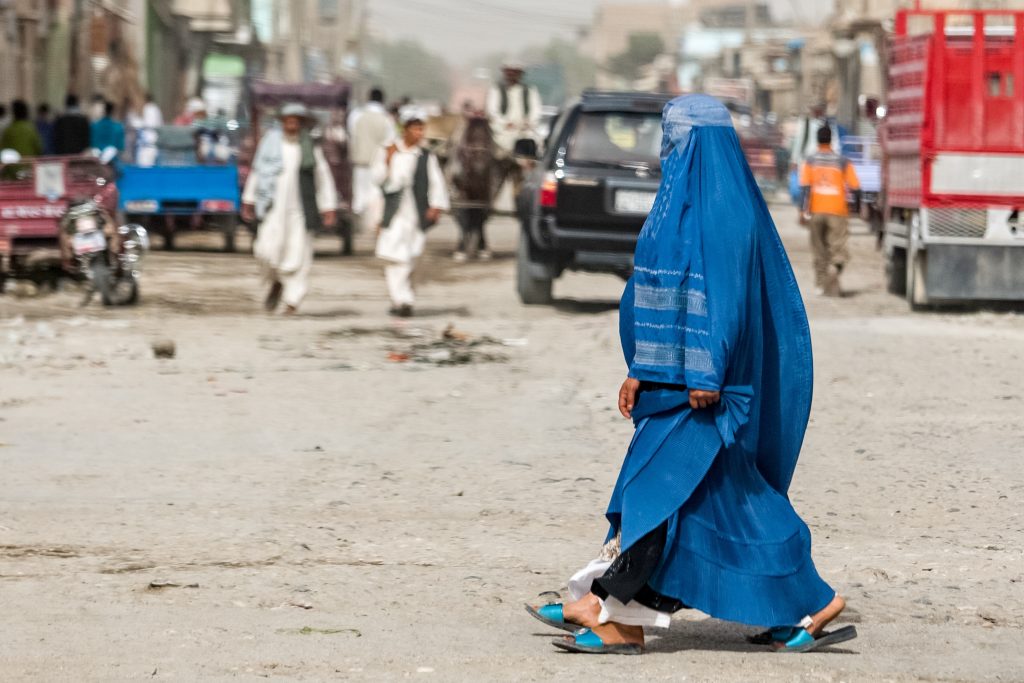 Francisca Pérez-Madrid is Professor of Law and Religion at the University of Barcelona.[1]
Francisca Pérez-Madrid is Professor of Law and Religion at the University of Barcelona.[1]
On 4 October 2024, in the case of AH (C-608/22) & FN (C-609/22) v. Bundesamt für Fremdenwesen und Asyl, the Court of Justice of the European Union (CJEU) confirmed that gender and nationality may constitute sufficient criteria for an EU member state to grant asylum to a particular group of women. The applicants, Afghan nationals “AH” and “FN,” sought refugee status in Austria, citing the persecution of women under Afghanistan’s Taliban regime. Austria denied them refugee status, granting subsidiary protection[2] instead, based on anticipated economic and social hardship if they were to return to Afghanistan. Austrian authorities expressed doubts regarding AH’s credibility and concluded that FN did not face a genuine risk of persecution.
On appeal, AH and FN argued that they had adopted a Western lifestyle incompatible with Afghanistan under Taliban rule. However, Austrian courts dismissed their appeals, concluding that their lifestyles in Austria were not sufficiently “Western” to render them incapable of reintegration into Afghan society.
The Austrian Supreme Court questioned whether the situation faced by these women could constitute persecution grave enough to justify asylum, prompting it to seek clarification from the CJEU on two key points.
First, it inquired whether the treatment of women in Afghanistan under the Taliban could be considered “persecution” within the meaning of Article 9(1) of Directive 2011/95/EU.
Second, it asked whether a woman’s belief that she would be affected by such treatment was sufficient grounds for asylum or whether an individual assessment of the actual risk she would face was required. According to European law, member states must assess all pertinent factors, including the applicant’s country of origin, background, and personal circumstances, such as gender and age, as well as the relevant legal frameworks and practices.
Responding to the first question, the CJEU considered the return of the Taliban to power in 2021 and its consequences for Afghan women. Women have been denied access to secondary and higher education, prohibited from pursuing professions or participating in politics, and subjected to forced marriage. Their rights to health care and freedom of movement are severely restricted, and they must be accompanied by a male relative and wear a full-face veil when in public. Additionally, they lack legal protections against gender-based and domestic violence.
In late September 2024, Australia, Canada, Germany, and the Netherlands announced their intention to take Afghanistan to the International Court of Justice (ICJ) for gender discrimination in response to the Taliban’s brutal repression of women and girls. This is the first time a state has invoked the Convention on the Elimination of All Forms of Discrimination Against Women (CEDAW) to sue another nation at the ICJ for gender discrimination.
The cumulative effect of these measures creates an environment in which women’s rights are systematically denied. Many activists, scholars, and policymakers describe this as “gender apartheid”—a regime of systematic oppression impacting nearly every aspect of women’s lives.
The CJEU identified forced marriage as an act of persecution equivalent to slavery, prohibited under Article 4 of the European Convention on Human Rights (ECHR). It also underscored that the lack of protection against gender-based violence constitutes inhuman and degrading treatment, contrary to Article 3 of the ECHR.[3]
The CJEU thus found that Afghan women and girls constitute a specific social group enduring serious, systematic, and institutionalized discrimination. The cumulative severity of discriminatory measures infringes on human dignity as enshrined in Article 1 of the European Union’s Charter of Fundamental Human Rights, warranting refugee status.
Regarding the second question, the CJEU confirmed that authorities must evaluate each asylum application on a case-by-case basis. However, it allows for a margin of discretion in adapting assessment methods to contextual circumstances. In the case of Afghan women, the Court ruled that they need not prove distinguishing characteristics beyond gender. Furthermore, European law (Article 4(3) of Directive 2011/95/EU) does not require an individualized analysis of each discriminatory measure; gender and nationality alone can suffice to establish persecution, as endorsed by the UNHCR in its 2023 report.
This judgment marks a significant step in the intersectional recognition of gender-based persecution. However, this exceptional framework risks affecting the overall purpose of asylum mechanisms, potentially creating a “pull effect” and prioritizing certain grounds for asylum over others, contingent on the applicant’s gender.

The AH & FN judgment resonates with two recent precedents. In WS (C-621/21) of 16 January 2024, the CJEU recognized that gender-based violence constitutes persecution and grounds for asylum or subsidiary protection, thereby acknowledging that private-sphere gender-based persecution may justify international protection.
Under EU Directive 2011/95/EU, persecution due to membership in a particular social group is valid if one is a member of a group that comprises individuals who share an immutable characteristic, an unchangeable common background, or an identity-defining trait or belief that they should not be forced to renounce. Furthermore, the group must be perceived as distinct within its country of origin. In WS, the Court broadly interpreted these requirements, allowing women facing domestic violence to be considered a social group under the EU asylum framework.
On 11 June 2024, in K. and L. (C-646/21), the CJEU acknowledged the role of an intersectional gender perspective in granting asylum. The case involved two Iraqi sisters residing in the Netherlands for five years who feared persecution if returned to Iraq due to their “Westernized” identity. The CJEU held that individuals belonging to a particular social group, having adopted European values of gender equality, should be protected, as their identities had been fundamentally shaped by these values.
These judgments underscore the CJEU’s recognition of gender-based and intersectional persecution. Private and public gender-based violence, cumulative discriminatory measures, and a reformed identity based on gender equality are considered grounds for protection. This ruling not only protects Afghan women but also sets a precedent that may influence refugee law in Europe and elsewhere. It reinterprets existing law to address contemporary human rights challenges and promote social justice.
While this jurisprudence advances the humanitarian mission of asylum, it has also raised concerns that it could lead to unequal access to protection on the basis of persecution, as a certain group of people can be granted an automatic preference in obtaining asylum. Thus, a balanced assessment should take into account vulnerability under each of the Geneva Convention’s persecution grounds: race, religion, nationality, membership in a particular social group, and political opinion.
References & Notes:
[1] This post is part of Project PID2020-114400GB-I00 funded by MCIN/ AEI/10.13039/501100011033/ (Spain).
[2] Austria offers temporary “subsidiary protection” status to individuals who do not qualify for refugee status but face a real risk of harm if returned to their home country.
[3] It is worth noting that according to Articles 1, 3, and 4(2) of the Istanbul Convention, the right to gender equality includes protection against gender-based violence, freedom from forced marriage, and freedom of religious choice.
